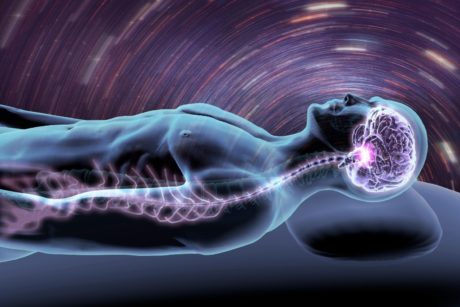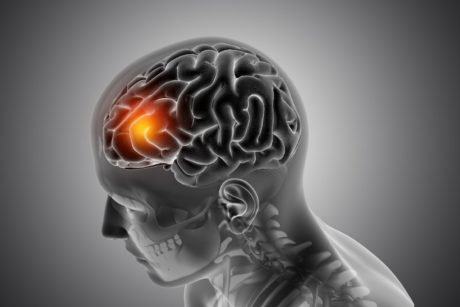This course is designed for those interested to learn the basics of CBT techniques useful in personal lives, and for professionals as value to clients, patients, students, or employees, for a worry-controlled life. Read more.
Access all courses in our library for only $9/month with All Access Pass
Get Started with All Access PassBuy Only This CourseAbout This Course
Who this course is for:
- People in the helping professions—therapists, doctors, nurses, social workers, even teachers and supervisors—will find many of these CBT techniques useful in their personal lives, and also of value to clients, patients, students, or employees.
What you’ll learn:
- Cognitive behavioral techniques to relieve anxiety, lift depression, and calm anger
Requirements:
- No prior knowledge is required to take this course
The Ultimate Cognitive Behavioral Therapy CBT based Worry treatment plan for laymen and professionals with Worksheets and Templates
Why this course?
This course directly addresses the problem of worry. When you feel bad, you don’t have the time and patience to wade through simplistic pep talks, unrealistic success stories, needless horror stories, or long-winded and obscure discussions of theory. That is why I made this CBT course as clear and as brief as possible.
On the other hand, when you feel bad you don’t have the energy to seek out partial fragments of the solution to your problem in widely scattered locations. So I’ve also made this CBT Course as complete as possible.
Everything you need to learn the techniques in this course is presented in detail, proceeding logically, step-by-step. If you are in pain, you also don’t have any time to waste on unproven remedies of doubtful utility. Therefore, I have included only techniques that have been proven to have strong therapeutic benefits in many well-designed studies with many different types of people, and over a long period of time.
Over the past thirty years, many new cognitive behavioral techniques have been developed and refined to relieve anxiety, lift depression, and calm anger. The best of these techniques are presented in this CBT Course. They offer you real promise that help is on the way. With patience and a little effort, you can start to feel better soon.
Special Features:
- Readymade CBT Treatment worksheets
- Practice them as self-help steps toward change.
- Self-Guided made possible
- Cognitive Behavioral Therapy foundational knowledge included
- You have to do the exercises, fill in the worksheets, and carry out real changes in how you think and behave.
The goal is to be able to use the techniques wherever and whenever you need to, without having to refer to the course.
Personal Disclaimer: My courses do not hold any academic value and are void of warranty. All my courses are mere self-improvement advice gained from personal learning and experience. This course is not a substitute for the professional help of a medical practitioner, certified therapist or counselor, nor is it a substitute for University approved courses. I am not a Psychologist or Certified Therapist. This course is based on the works of Matthew McKay, PhD, Martha Davis, PhD, Patrick Fanning. Student agrees to purchase this course with full knowledge of the above facts.Our Promise to You
By the end of this course, you will have learned cognitive behavioral therapy for worry control.
10 Day Money Back Guarantee. If you are unsatisfied for any reason, simply contact us and we’ll give you a full refund. No questions asked.
Get started today and learn more about CBT or Cognitive Behavioral Therapy.
Course Curriculum
| Section 1 - Introduction | |||
| Introduction | 00:00:00 | ||
| Section 2 - Thoughts | |||
| Section Introduction | 00:00:00 | ||
| Uncovering Automatic Thoughts | 00:00:00 | ||
| Symptom Effectiveness | 00:00:00 | ||
| Understanding Feedback Loops | 00:00:00 | ||
| The Nature Of Automatic Thoughts | 00:00:00 | ||
| Characteristics Of Automatic Thoughts – Part 1 | 00:00:00 | ||
| Characteristics Of Automatic Thoughts – Part 2 | 00:00:00 | ||
| Thought Journal | 00:00:00 | ||
| Section 3 - Limited Thinking Patterns | |||
| Section Introduction | 00:00:00 | ||
| Filtering | 00:00:00 | ||
| Polarized Thinking | 00:00:00 | ||
| Over Generalized Thinking | 00:00:00 | ||
| Mind Reading | 00:00:00 | ||
| Catastrophizing | 00:00:00 | ||
| Magnifying | 00:00:00 | ||
| Personalization | 00:00:00 | ||
| Shoulds | 00:00:00 | ||
| Composing Balanced Alternative Thoughts | 00:00:00 | ||
| Using Thought Journal To Combat Limited Thinking Patterns | 00:00:00 | ||
| Section 4 - Hot Thoughts | |||
| Section Introduction | 00:00:00 | ||
| Eight Steps For Changing Hot Thoughts | 00:00:00 | ||
| Section 5 - Relaxation Exercises | |||
| Section Introduction | 00:00:00 | ||
| Abdominal Breathing | 00:00:00 | ||
| Progressive Muscle Relaxation | 00:00:00 | ||
| Relaxation Without Tension | 00:00:00 | ||
| Cue Controlled Relaxation | 00:00:00 | ||
| Visualisation | 00:00:00 | ||
| Section 6 - Worry Control Plan | |||
| Section Introduction | 00:00:00 | ||
| Worry System | 00:00:00 | ||
| Relaxation | 00:00:00 | ||
| Risk Assessment | 00:00:00 | ||
| Worry Exposure | 00:00:00 | ||
| Worry Behaviour Prevention | 00:00:00 | ||
| Section 7 - Mindfulness And Thought Diffusion | |||
| Section Introduction | 00:00:00 | ||
| The Thought That | 00:00:00 | ||
| Labelling Effect | 00:00:00 | ||
| Ditching The Meaning | 00:00:00 | ||
| Waterfall Metaphor | 00:00:00 | ||
| Cognitive Defusion | 00:00:00 | ||
| Self As Context | 00:00:00 | ||
| Mindfulness | 00:00:00 | ||
| Anapana Meditation | 00:00:00 | ||
| Acceptance Of Bodily Sensations | 00:00:00 | ||
| Vipassana Meditation | 00:00:00 | ||
| Being With Anxiety | 00:00:00 | ||
| Knowing What Really Matters | 00:00:00 | ||
| Conclusion | 00:00:00 | ||
| Section 8 - Bonus DBT Distress Tolerance Skills | |||
| Basic Skills | 00:00:00 | ||
| Advanced Skills | 00:00:00 | ||
About This Course
Who this course is for:
- People in the helping professions—therapists, doctors, nurses, social workers, even teachers and supervisors—will find many of these CBT techniques useful in their personal lives, and also of value to clients, patients, students, or employees.
What you’ll learn:
- Cognitive behavioral techniques to relieve anxiety, lift depression, and calm anger
Requirements:
- No prior knowledge is required to take this course
The Ultimate Cognitive Behavioral Therapy CBT based Worry treatment plan for laymen and professionals with Worksheets and Templates
Why this course?
This course directly addresses the problem of worry. When you feel bad, you don’t have the time and patience to wade through simplistic pep talks, unrealistic success stories, needless horror stories, or long-winded and obscure discussions of theory. That is why I made this CBT course as clear and as brief as possible.
On the other hand, when you feel bad you don’t have the energy to seek out partial fragments of the solution to your problem in widely scattered locations. So I’ve also made this CBT Course as complete as possible.
Everything you need to learn the techniques in this course is presented in detail, proceeding logically, step-by-step. If you are in pain, you also don’t have any time to waste on unproven remedies of doubtful utility. Therefore, I have included only techniques that have been proven to have strong therapeutic benefits in many well-designed studies with many different types of people, and over a long period of time.
Over the past thirty years, many new cognitive behavioral techniques have been developed and refined to relieve anxiety, lift depression, and calm anger. The best of these techniques are presented in this CBT Course. They offer you real promise that help is on the way. With patience and a little effort, you can start to feel better soon.
Special Features:
- Readymade CBT Treatment worksheets
- Practice them as self-help steps toward change.
- Self-Guided made possible
- Cognitive Behavioral Therapy foundational knowledge included
- You have to do the exercises, fill in the worksheets, and carry out real changes in how you think and behave.
The goal is to be able to use the techniques wherever and whenever you need to, without having to refer to the course.
Personal Disclaimer: My courses do not hold any academic value and are void of warranty. All my courses are mere self-improvement advice gained from personal learning and experience. This course is not a substitute for the professional help of a medical practitioner, certified therapist or counselor, nor is it a substitute for University approved courses. I am not a Psychologist or Certified Therapist. This course is based on the works of Matthew McKay, PhD, Martha Davis, PhD, Patrick Fanning. Student agrees to purchase this course with full knowledge of the above facts.Our Promise to You
By the end of this course, you will have learned cognitive behavioral therapy for worry control.
10 Day Money Back Guarantee. If you are unsatisfied for any reason, simply contact us and we’ll give you a full refund. No questions asked.
Get started today and learn more about CBT or Cognitive Behavioral Therapy.
Course Curriculum
| Section 1 - Introduction | |||
| Introduction | 00:00:00 | ||
| Section 2 - Thoughts | |||
| Section Introduction | 00:00:00 | ||
| Uncovering Automatic Thoughts | 00:00:00 | ||
| Symptom Effectiveness | 00:00:00 | ||
| Understanding Feedback Loops | 00:00:00 | ||
| The Nature Of Automatic Thoughts | 00:00:00 | ||
| Characteristics Of Automatic Thoughts – Part 1 | 00:00:00 | ||
| Characteristics Of Automatic Thoughts – Part 2 | 00:00:00 | ||
| Thought Journal | 00:00:00 | ||
| Section 3 - Limited Thinking Patterns | |||
| Section Introduction | 00:00:00 | ||
| Filtering | 00:00:00 | ||
| Polarized Thinking | 00:00:00 | ||
| Over Generalized Thinking | 00:00:00 | ||
| Mind Reading | 00:00:00 | ||
| Catastrophizing | 00:00:00 | ||
| Magnifying | 00:00:00 | ||
| Personalization | 00:00:00 | ||
| Shoulds | 00:00:00 | ||
| Composing Balanced Alternative Thoughts | 00:00:00 | ||
| Using Thought Journal To Combat Limited Thinking Patterns | 00:00:00 | ||
| Section 4 - Hot Thoughts | |||
| Section Introduction | 00:00:00 | ||
| Eight Steps For Changing Hot Thoughts | 00:00:00 | ||
| Section 5 - Relaxation Exercises | |||
| Section Introduction | 00:00:00 | ||
| Abdominal Breathing | 00:00:00 | ||
| Progressive Muscle Relaxation | 00:00:00 | ||
| Relaxation Without Tension | 00:00:00 | ||
| Cue Controlled Relaxation | 00:00:00 | ||
| Visualisation | 00:00:00 | ||
| Section 6 - Worry Control Plan | |||
| Section Introduction | 00:00:00 | ||
| Worry System | 00:00:00 | ||
| Relaxation | 00:00:00 | ||
| Risk Assessment | 00:00:00 | ||
| Worry Exposure | 00:00:00 | ||
| Worry Behaviour Prevention | 00:00:00 | ||
| Section 7 - Mindfulness And Thought Diffusion | |||
| Section Introduction | 00:00:00 | ||
| The Thought That | 00:00:00 | ||
| Labelling Effect | 00:00:00 | ||
| Ditching The Meaning | 00:00:00 | ||
| Waterfall Metaphor | 00:00:00 | ||
| Cognitive Defusion | 00:00:00 | ||
| Self As Context | 00:00:00 | ||
| Mindfulness | 00:00:00 | ||
| Anapana Meditation | 00:00:00 | ||
| Acceptance Of Bodily Sensations | 00:00:00 | ||
| Vipassana Meditation | 00:00:00 | ||
| Being With Anxiety | 00:00:00 | ||
| Knowing What Really Matters | 00:00:00 | ||
| Conclusion | 00:00:00 | ||
| Section 8 - Bonus DBT Distress Tolerance Skills | |||
| Basic Skills | 00:00:00 | ||
| Advanced Skills | 00:00:00 | ||




CBT Worry Control
Easy to follow good approach